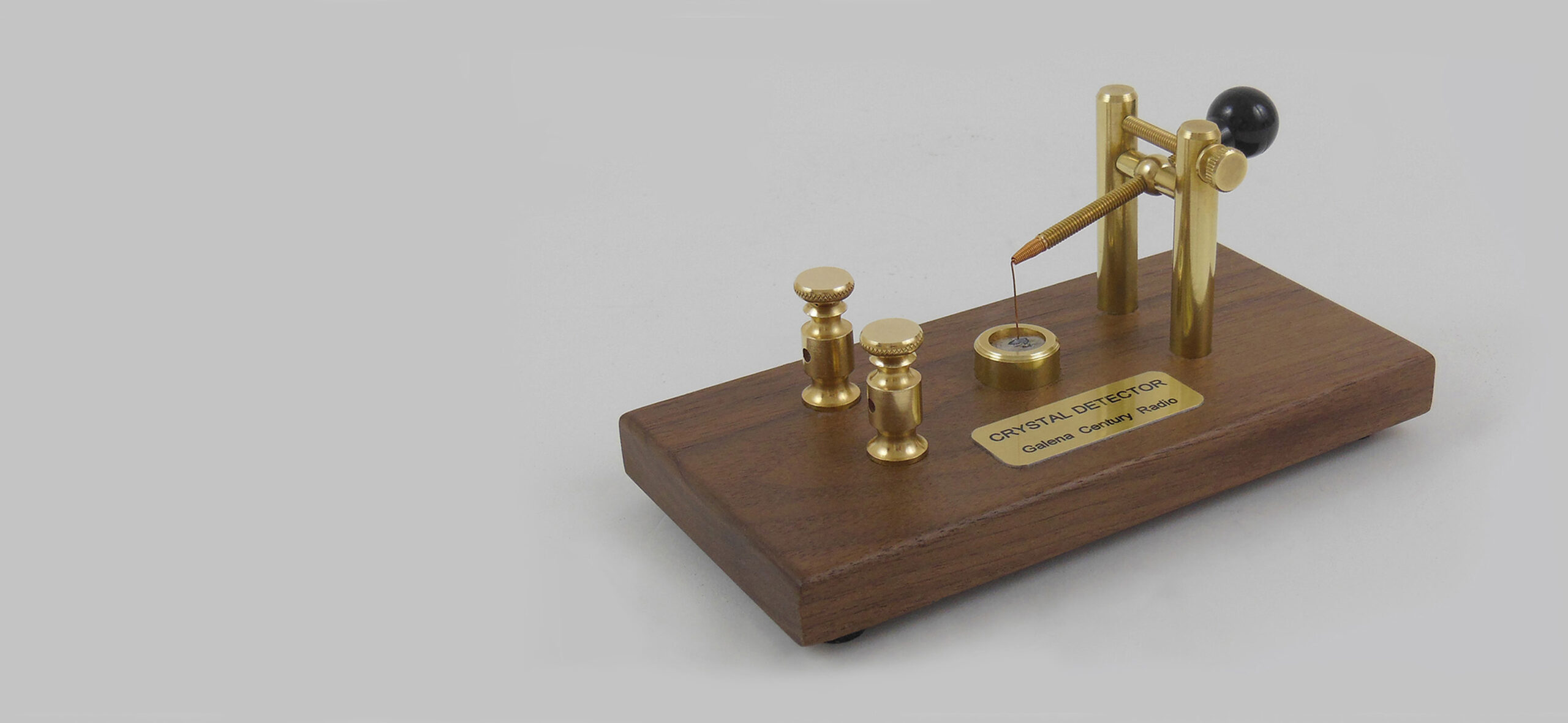The Crystal Radio
The Crystal Radio is a very simple AM band receiver popular in the early days of radio. The receiver gets all of its power from radio waves picked up by a long wire antenna and does not need batteries or household current. The simplicity of the Crystal Radio design made it an ideal vehicle for the explosion of worldwide wireless communication in the early 20th Century.
To rural area farmers and ranchers, the homemade crystal radio became a prized source of information about markets, weather and news. In urban areas, for the first time in history, large groups of people were instantly aware of events taking place in their home town and around the world. As late as World War II, soldiers in the field were using their razor blades to construct what became known as the ‘Foxhole Radio’ to listen to radio broadcasts for information and entertainment.
The Crystal Radio was developed in a time when something being called ‘store bought’ was still a novelty; a time when most people were of mind that, if you wanted something done, you had to do it yourself. The neat, clean, colorful, and pristine plastic forms that comprise today’s electronic marvels were still years in the future. Nobody knew what a radio was supposed to be made of, what it was supposed to look like, or how it was supposed to perform.
A search of the internet will bring up photos and designs for hundreds of variations of the Crystal Radio, Crystal Detectors, Coils, and Antennas. It quickly becomes obvious that the greatest ‘radio heads’ in history never did find the one ‘best’ design.
Part of the reason for this incredible wealth of Crystal Radio designs is the seemingly endless list of variables that affect every Crystal Radio’s performance. Some of the major factors include; the quality of the Galena Crystal; the quality of the Galena Crystal to Cat’s Whisker contact; in more modern versions of the radio, the quality of the Germanium Diode; the wire Coil design and Tap intervals; the time of day; the weather conditions; the antenna length, and the grounding arrangement. By assembling and arranging a few basic elements to overcome those challenges, even to this day, your Crystal Radio can be the best there ever was.
Although the Crystal Radio has undergone endless modifications over the past 100 years, including the substitution of a diode for the crystal, the Crystal Radio remains a Crystal Radio. Turn off the flat-screen; string an antenna; connect a ground wire; close your eyes and tap into the magic of that elusive radio broadcast signal that seems to be invisibly floating around in the ether. Experience the heyday of the Crystal Radio; the time of the Wright Brothers and the first powered flights; Henry Ford and the horseless carriage; the Roaring 20s, and of course, the Red Baron, the Titanic, and those World Wars.
Check Out These Sites!
Borden Radio Company
http://www.xtalman.com
Dave’s Homemade Radios
http://makearadio.com
Peebles Originals
http://peeblesoriginals.com
The Xtal Set Society
http://www.midnightscience.net


